India bought 36 Rafale Aircraft for its air force under an inter-governmental agreement signed in September 2016.
The cost of the 2016 deal was estimated to be around €7.87 billion (approximately ₹58,891 Crore) and included tailor-made enhancements, weapons packages, and a performance-based logistics agreement.
The first of these 36 Rafale aircraft was delivered to India on October 8, 2019, and all deliveries were expected to be completed by 2022.
Now, shedding light on Pakistan’s JF-17 Thunder, it was a joint project between Pakistan and China. This development project started with an agreement which was signed in June 1999 to co-develop and produce the aircraft.
Both fighter jets have their pros and cons; for example, the Rafale has a maximum speed of Mach 1.8 (1,912 km/h), whereas the JF-17 has a top speed of Mach 1.6 (1,960.1 km/h; 1,217.9 mph).
Check Out| Largest Airports in the USA by Area in 2025: Full List & Key Facts
Rafale vs JF-17: Which One is Better?
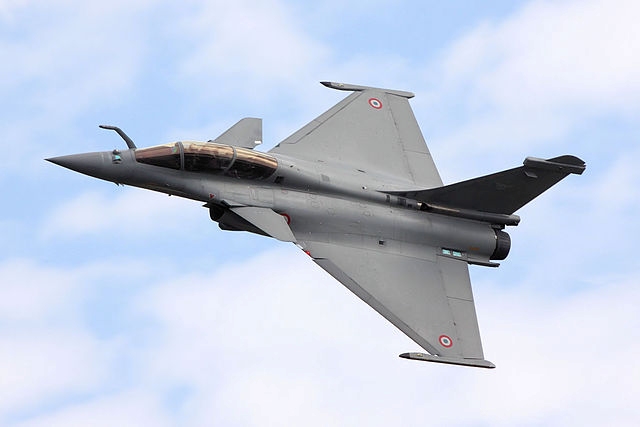
Source: Armedforces.eu
While India had finalised the acquisition of 36 Rafale fighter jets from France, neighbouring Pakistan had reached out to China for the speedy procurement of up to 62 JF-17 aircraft.
Even before the Indian Air Force (IAF) was set to receive the 36 Rafale fighters in a fly-away condition from Dassault Aviation, the Pakistan Air Force (PAF) was attempting to add as many as 62 JF-17 jets.
| Feature | Dassault Rafale | JF-17 Thunder |
| Name | Dassault Rafale | JF-17 Thunder |
| Type | Multirole fighter | Multirole combat aircraft |
| Origin | France | China/Pakistan |
| Produced | 1986 | 2007 |
| Unit Cost | $74 million (Rafale B) | $25–32 million |
Specifications
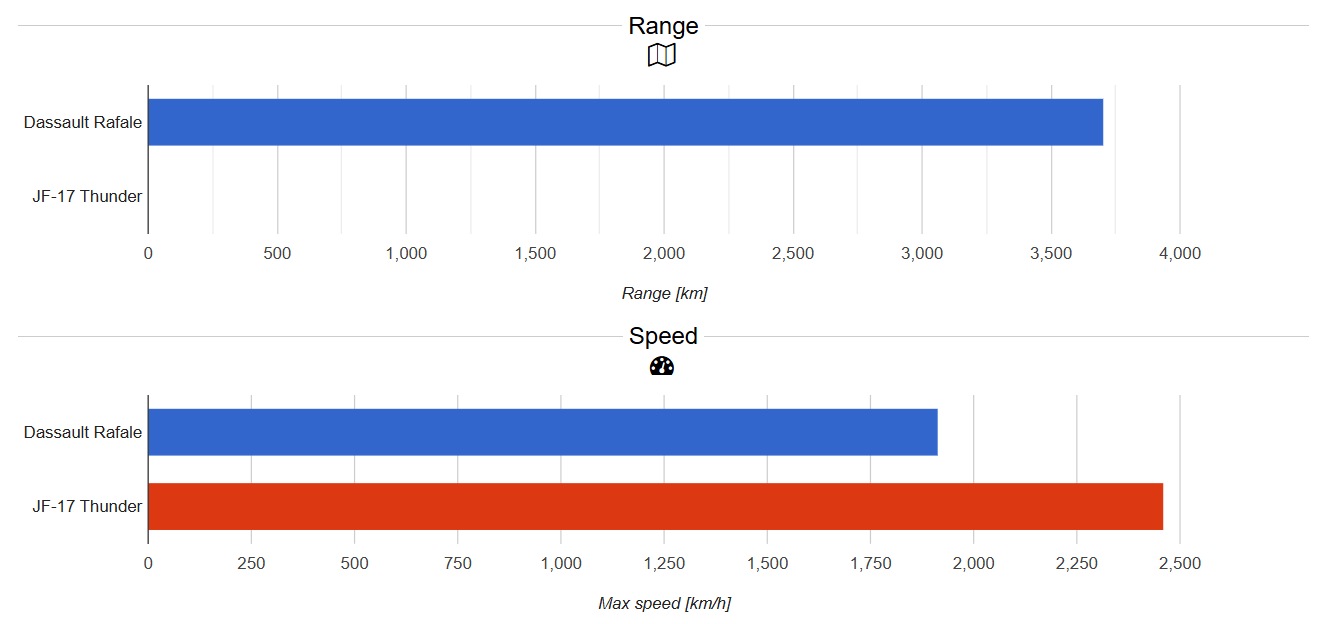
| Range | 1,850 km (999 nautical miles) | 3,482 km (1,880 nautical miles) |
| The JF-17 has a considerably longer unrefuelled range. However, the Rafale's range can be extended through mid-air refuelling. | ||
| Max Speed | Mach 1.8 (1,915 km/h) (1,034 knots) | Mach 1.6 (1,960.1 km/h) (1,058 knots) |
| The JF-17 boasts a slightly higher top speed. | ||
| Service Ceiling | 15,235 m | 16,900 m |
| Weight Empty | 10.3 kg | 6.6 kg |
| Max Takeoff Weight | 24.5 kg | 12.4 kg |
| The Rafale has a significantly higher empty and maximum takeoff weight, suggesting a larger overall capacity. | ||
| Crew | 1–2 | 1 |
Dimensions

| Length | 15.27 m | 14.93 m |
| Width | 10.80 m | 9.48 m |
| Height | 5.34 m | 4.72 m |
| The Rafale is slightly larger in all dimensions compared to the JF-17. | ||
Armament:
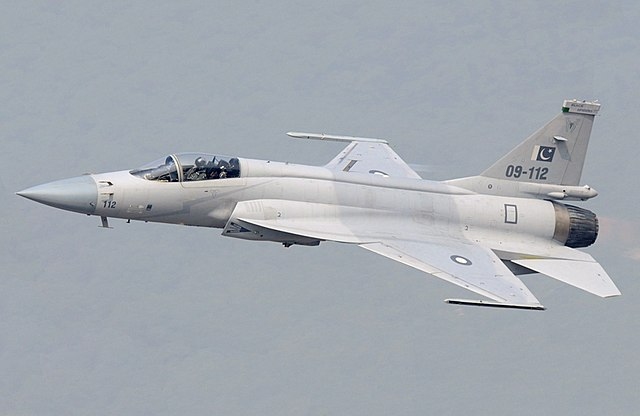
Source: Armedforces.eu
- Rafale: Features a standard 30 mm GIAT 30/M791 internal cannon (up to 125 rounds) and 14 external hardpoints for air-to-air and air-to-surface missiles, precision-guided weapons, and fuel tanks.
- JF-17: Equipped with a standard 23 mm GSh-23-2 twin-barrel internal cannon and seven external hardpoints for various air-to-air and air-to-surface munitions.
- The Rafale has more external hardpoints, allowing it to carry a larger and potentially more diverse array of weaponry.
Rafale vs F-16 Fighting Falcon: Who Will Win?
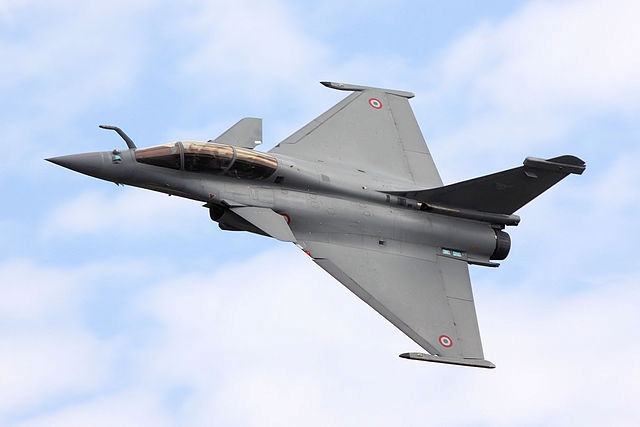
Source: Armedforces.eu
Rafale is a 4.5th generation fighter, French-made by Dassault (2001), whereas the F-16 is a 4th generation fighter, US-made by General Dynamics (1973).
Over 4,600 F-16 fighter jets have been produced, with 3,000 aircraft currently serving 25 nations. Additionally, the F-16 has a top speed of 2400 km/h and a serviceability of 12000 hrs.
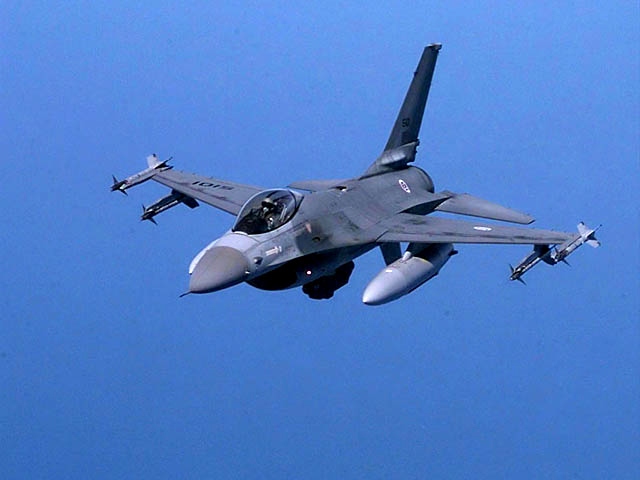
Source: Armedforces.eu
| Feature | Rafale | F-16 Fighting Falcon |
| Name | Dassault Rafale | General Dynamics F-16 Fighting Falcon |
| Type | Multirole fighter | Multirole fighter, air superiority fighter |
| Origin | France | USA |
| Produced | 1986 | 1973 |
| Unit cost | 74 million $ (Rafale B) | 18.8 million $ |
| Full description | Description, operators | Description, operators |
| Specifications | ||
| Range | 3,700 km | 4,220 km |
| Max speed | Mach 1.8 (1,912 km/h) | Mach 1.2 (915 mph, 1,470 km/h) |
| Service ceiling | 15,235 m | 15,240 m |
| Weight empty | 10.3 t | 8.57 t |
| Weight max | 24.5 t | 19.2 t |
| Crew | 1–2 | 1 |
| Dimensions | ||
| Length | 15.27 m | 15.06 m |
| Width | 10.80 m | 9.96 m |
| Height | 5.34 m | 4.88 m |
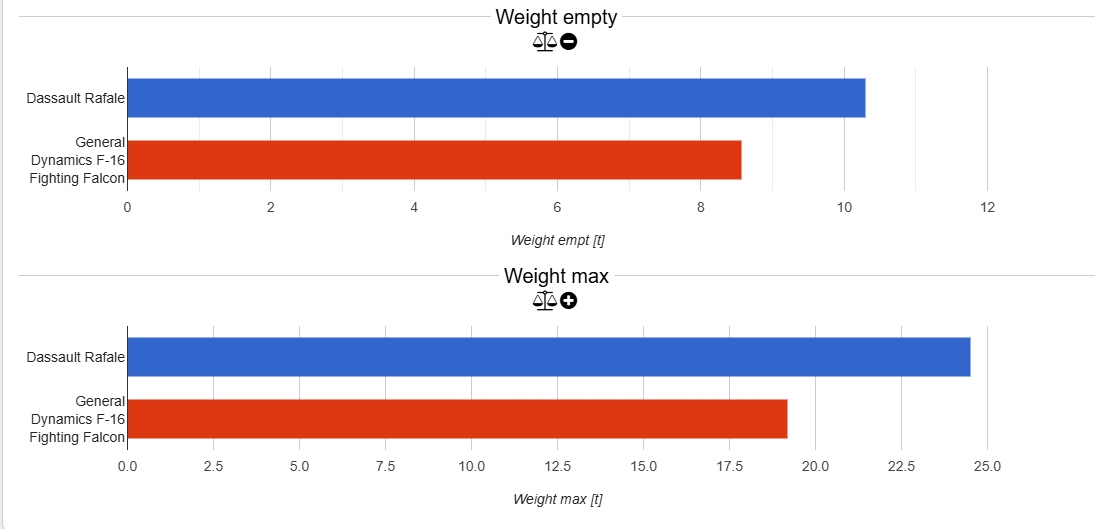
Physical Dimensions
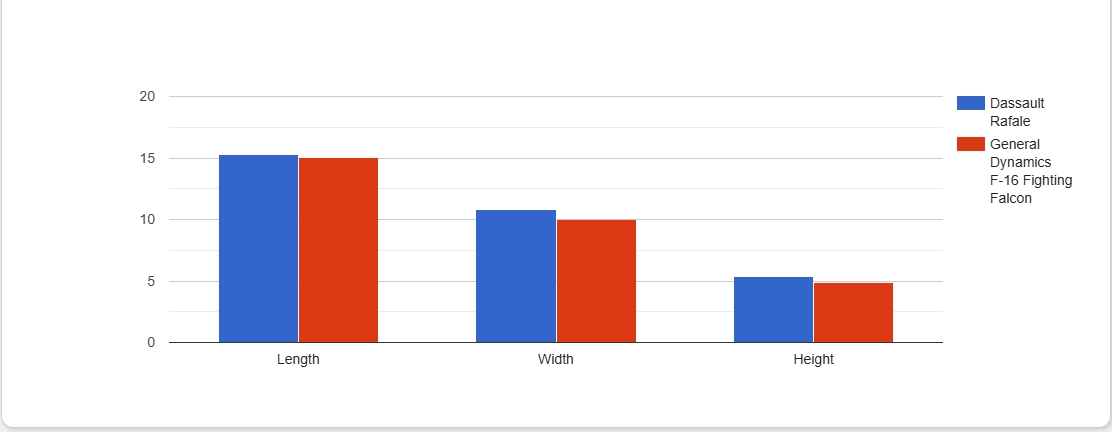
| Specification | Rafale | F-16 |
| Height | 5.34m | 5.09m |
| Length | 15.27m | 15m |
| Wingspan | 10.9m | 9.44m |
| Maximum Load | 24,500kg | 21,272kg |
Maneuverability Characteristics
- Rafale: The Rafale excels in manoeuvrability, sustaining 9G even at high angles of attack. Its delta wing and canard enable agile flight and short takeoffs/landings. A higher thrust-to-weight ratio further boosts its performance.
- F-16: The F-16 features a robust 9G-capable airframe and was initially designed for high-agility dogfighting. However, its inherent instability necessitates a sophisticated flight control system for maintaining stable flight.
Radar and Electronics
Rafale: SPECTRA system
- Detects 40 targets
- 90-mile range
- Advanced electronic warfare suite
F-16: APG-83 radar
- Tracks 20 targets
- 85-mile range
- Ground collision avoidance
Weapons Systems
- Rafale: Equipped with 14 hardpoints and a substantial 9.5-tonne payload capacity, the Rafale can carry a diverse range of ordnance.
- Its formidable firepower is further enhanced by a 30mm twin-pod cannon capable of firing at an impressive rate of 2,500 rounds per minute. Demonstrating its versatility, the Rafale possesses multi-role capability, including nuclear delivery.
- F-16: The F-16 features 9 hardpoints for carrying various weapons. It is armed with a 20mm rotary cannon and boasts diverse missile compatibility. Its design allows for a multi-role capability, enabling it to perform a variety of missions.
Key Advantages of Rafale:
- Superior payload capacity
- Better manoeuvrability
- Advanced radar capabilities
- Higher thrust-to-weight ratio
Key Advantages of the F-16:
- Greater operational range
- Proven combat record
- Lower operational costs
- Wider global adoption
Conclusion
Recently, India signed a deal with France on Monday, April 28, 2025, to acquire 26 Rafale Marine aircraft for the Indian Navy. The deal is valued at approximately ₹63,000 to ₹64,000 crore (around $7.5 billion).
This includes the aircraft, weapons, simulators, spares, associated equipment, crew training, and logistics support. These Rafale-M jets are intended to operate from the Indian Navy's aircraft carrier INS Vikrant.
About the F-16 Fighting Falcon, it was signed in December 1981, with the first F-16 arriving in Pakistan on January 15, 1983. Subsequent orders and deliveries were made under later programmes like Peace Gate II, III, and IV throughout the 1980s.
While both aircraft are highly capable, the Rafale's advanced features and superior performance metrics position it as the more capable platform, reflecting its newer generation status.
What's Next| Top 10 Largest Navy Fleets In The World 2025
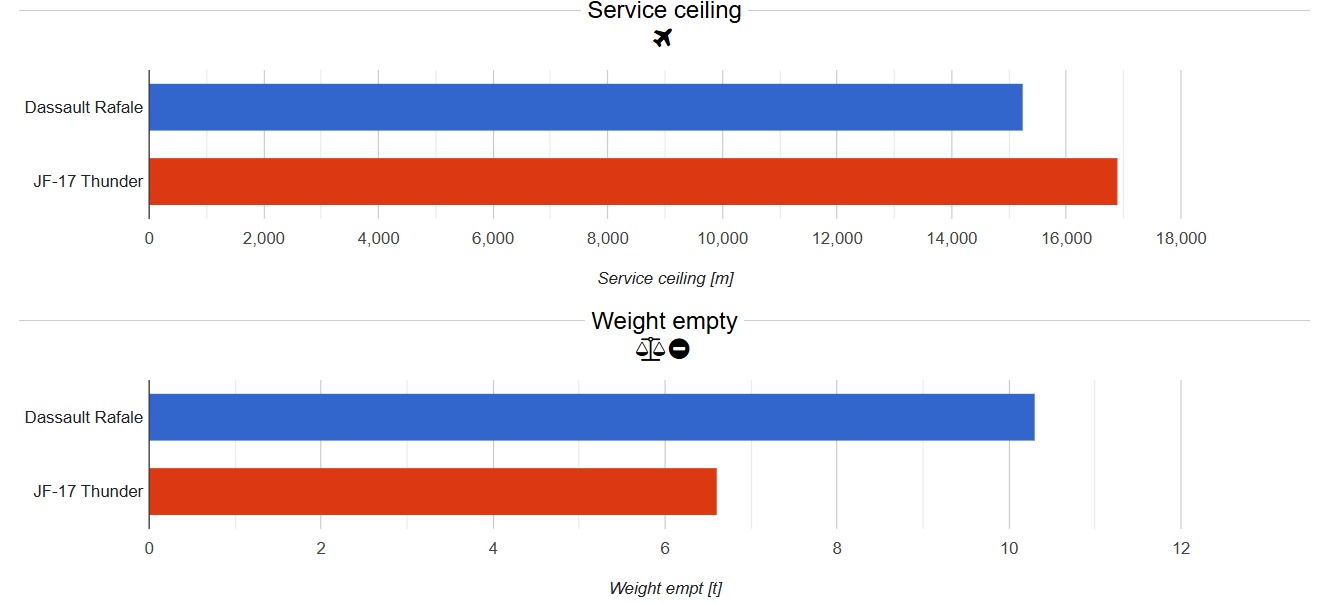


Comments
All Comments (0)
Join the conversation